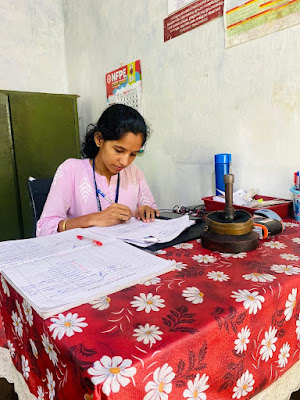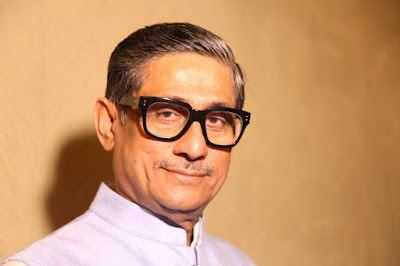Journalist Siddharthya Roy, in his book, ‘The Company of Violent Men’, focuses on the nether world of terrorists, Maoists, fixers, spies, and people escaping from ethnic strife like the Rohingyas
By Shevlin Sebastian
In the preface, journalist Siddharthya Roy gives an indication of the people we will meet in his book, ‘The Company of Violent Men.’ They include ‘militants and refugees, clandestine agents and insurgents, reporters and wheeler-dealers — some extraordinary and some very ordinary individuals caught in circumstances that news headlines, including those of my own stories, have flattened them into convenient tropes of good and evil and us and them.’
Roy continues: ‘These violent men and women I speak of, some of them fight for faith, others fight for power. Many fight just to belong. But peel away the burqa or the badge, scratch the skin of a military officer or a mercenary, and the fears and failings that lie beneath are not so foreign from yours or mine.’
In the beginning, Roy goes to Dhaka to investigate who was behind the mayhem at the Holey Artisan cafe in Dhaka on July 1, 2016. A group of five men, carrying assault guns and machetes, carried out the attack and took diners hostage.
They belonged to the Jamaat-ul-Mujahideen Bangladesh (JMB), a home-grown outlawed Islamist group. Army commandos stormed the cafe. In the ensuing shootout, 18 foreigners died. All five assailants were shot dead.
In his search, Roy ended up in Bagmara (190 kms from Dhaka). That was where Siddique-ul Islam, who called himself Bangla Bhai (Bengal’s Big Brother) of the JMB, first set up his base.
He ruled the place with violence. Bangla Bhai forcibly collected taxes from the villagers. The JMB prohibited all non-religious gatherings. They did not allow public singing, playing sports, and plays. Women could not go out of the house without male supervision. And they held kangaroo courts where they meted out justice.
And Roy saw Musa, a victim of Bangla Bhai’s senseless violence. ‘Musa couldn’t really talk. All he could do was gurgle and squeak while froth gathered at the edges of his misshapen mouth. But he started his narrative with gusto through agitated gurgles, frothing, as his hollowed-out eyes grew big and small.
His wife, who had been standing behind the threshold to the cowshed, pulled the ghomta of her saree lower, came in and rolled up his mud-stained dhoti.’
Roy continued: ‘There were his broken legs. They were ghastly twisted twig-thin limbs with dried-up gashes of rolled back flesh.’
After a while, the government reacted. The Rapid Action Battalion moved to Bagmara. Bangla Bhai was hiding in a shed. He gave up without a fight. Authorities hanged him in 2007 along with other members of his group. But the group survives.
Thereafter, Roy went to Kutapalong in Cox’s Bazar, to meet the Rohingyas refugees who fled from Myanmar following a genocide.
While talking to the mother of a little girl called Shaheen, Roy gave you an idea of how one’s life can go topsy-turvy in a moment. The family lived in Maungdaw Township. This was near the Bangladesh-Myanmar border.
The husband ran a successful farm. The wife was a beautician who ran a beauty parlour. Shaheen was born in 2011 and then the woman had a son in 2014. Life was going on smoothly.
Then the military launched a crackdown in October 2016. It lasted for the next few months. Soon, it degenerated into a genocide. The Tatmadaw (the army) burned her husband and son in their house. Shaheen and her mother had gone to see some relatives in a neighbouring village. And so they survived.
“These men were so violent and heartless,” Shaheen’s mother said. “Like monsters.”
They had no option but to flee to Bangladesh, carrying nothing. Now Shaheen’s mother was doing haircuts and threading for the women in the camp.
In Cox’s Bazar, Roy encountered young Rohingya women at a brothel. They had entered the sex trade to survive. One of them, Inan, was a mother of four children, who had fled while her husband had stayed back at a town called Buthidaung in Rakhine State.
There was no news from him after a while. She tried sewing, but that was not enough to feed five people. But most of the men who coerced the women from the refugee camps to get into the sex trade were Rohingya men.
This is absorbing on-the-spot reporting. No sitting in an air-conditioned hotel in Dhaka and doing phone interviews. Roy goes and sees everything first-hand, meets people, and asks questions. And then writes about it.
This seems to be rare. Roy mentions how Western journalists pay local reporters in places like India, Bangladesh, Pakistan, Afghanistan, Iran or Kenya to write detailed reports for handsome money. Then they would pass them off as their stories, adding their bylines at the top.
Later, after he gets a grant, Roy goes to Germany. He wanted to find out whether IS fighters could use India as a base to fuel extremism on the subcontinent. Many IS fighters sneaked in after Germany allowed the migration of 10 lakh refugees from Syria.
But he felt they would fail because unlike in West Asia, where Islam is dominant, and the topography is similar all over, in India and other South Asian countries there was a multiplicity of religions, thought processes and the lay of the land varied from place to place.
‘The marshes of the Indus-Ganges-Padma-Brahmaputra would, in time, swallow the zeal of zealots as they had done so many times in history,’ wrote Roy.
The scene now shifts to Chhattisgarh, where Roy goes deep into Maoist territory. He is keen to find out whether the Indian government was using drones to bomb the Maoists. He was also keen to interview Madvi Hidma, the legendary leader of the People’s Liberation Guerrilla Army.
Hidma had conducted many successful attacks on the security forces. However, information and access were scarce, despite many promises by various middlemen.
In a village called Orchha, he met the locals who told them their biggest enemy was not the State, the Army or Maoists, but bears and boars.
One of them said they had planted some corn in a piece of land. The harvest was about to take place within a couple of days. In the night, two young men were keeping guard. Unfortunately, one of them, Monu, had brought along two bottles of mohua, the local liquor.
One villager said, “Just before dawn, the rustling began. Monu had drunk almost all of the two bottles and was sleeping. I tried waking him up, but when he didn’t, I took my spear and threw it into the bush. I couldn’t see well — but I took a chance. Sure enough, one of the beasts squealed and started struggling while smaller ones grunted and scattered. Hearing the sound, Monu woke up with a start and, like Salman Khan, ran to fight the pierced bear. The boar gave him what he deserved. Look at him now.”
On Monu’s back, there were long scars. It ran from the back to the side of the chest.
Like Monu, others, even without getting drunk, had suffered even more grievous injuries from boars, including slashes across the face.
From a distance, many of these villages in Chhattisgarh look picturesque. But it does not seem so when you get closer.
Here is how Roy described the odour in a village where no State official or security forces had stepped foot. ‘If one wished away the shit-smeared pigs running around in the background and ignored the smell of cow dung and pig droppings, the glade was picture perfect,’ he wrote.
Here’s another description from a remote village called Metaguda.
‘A young boy had just defecated some twenty metres from where we were sitting,’ wrote Roy. ‘The pigs got into a fight over who’d eat the shit even before the boy had properly stood up. The ones who didn’t get a share of the shit cake went back to the unwashed dishes piled in a plastic tub near us and licked little bits of rice off them.’
In Metaguda, where villagers greeted Roy with a ‘Laal Salaam’, they confirmed they had been the victim of bomb attacks by drones.
“It’s been happening for three years now,” said one villager.
However, they were reluctant to show the bombing spots because the Maoists did not give permission. Roy wrote, ‘Most rebel-held areas — not just Maoists — are harsh, hegemonic and arbitrary, and not even a semblance of civil rights is maintained.’
In the end, Roy left with no one showing him any conclusive proof of the drone bomb attacks.
Roy also met with ‘N’, a Rohingya resistance fighter, at a hotel in Cox’s Bazar. And this was how the man defended his activities to Roy.
“Are we the ones killing, raping, looting, setting people’s homes alight? Or is the Tatmadaw doing that?” N said. “And what they’re doing to the Rohingya in the Arakan will be done to the Kachin in the North and the Shan in the East? The pattern is clear and the tactics are the same. A small bunch of elite Burmese sitting in the palatial offices of Naypyidaw funded by the nacro-moguls of Yangon are out to subjugate every other identity in Myanmar.
“They claim to be protecting the nation, but, in reality, they are destroying it. They’re destroying the centuries of unity different peoples had. Tearing apart the very people they vow to defend. We are patriots. And we’ve proven it time and time again. It is the Tatmadaw, which is a terrorist organisation. That too has been proven time and time again.
“The real reason the Burmese are driving us out and burning our homes and fields is because we sit on one of the world’s largest oil and gas reserves.”
Roy continued to meet all sorts of people, including fishermen who transported meth by boat from Myanmar to Bangladesh.
And in a chapter called ‘The Louts’, Roy confirmed what most of us suspected. In many of these groups fighting for various causes, there are a lot of criminals who join.
As Roy wrote, ‘Essentially, a lot of street thugs do their run-of-the-mill thuggery and pass it off as soldiering. Their banners — whether green, red, black or stripes and stars — are just flimsy covers for acts that would’ve otherwise put them in prison.’
And so it goes. This book highlights the nether world which ordinary people do not know of. Roy has to be commended for risking his life, and many times, he experienced physical discomfort and danger, but he always went to where the action was. Thanks to his experiences, he has learnt to be sceptical. It is a world that abounds in falsehoods and misinformation. But he remained tenacious and courageous in his search for the truth.
This book is an eye-opener. And a welcome one at that.
(Published in Kitaab.org)


















